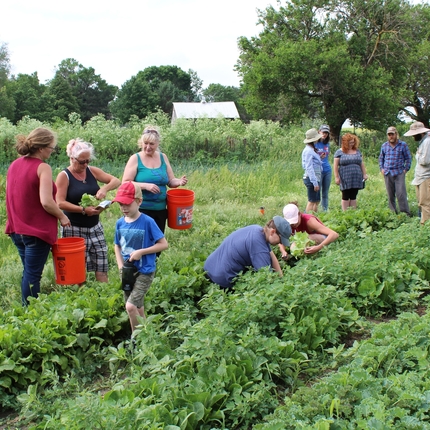The 2008 farm bill introduced U.S. Department of Agriculture’s (USDA) first – and so far only – program focused on the next generation of farmers: the Beginning Farmer and Rancher Development Program. The Center for Rural Affairs was a leader in designing, writing, and winning the program. A new report documents the success of the program in offering training opportunities to new farmers and ranchers.
The report, “Cultivating the Next Generation,” was released by the National Sustainable Agriculture Coalition in October 2017 as the first evaluation of the program’s impacts.
The release is timely, as the 2018 farm bill approaches and as USDA programs receive critical review. It is also timely to the state of U.S. agriculture, as many young people and returning military veterans consider careers in agriculture at the same time many senior farmers reach the end of their careers.
Interest in farming is strong among beginners. We hear from beginners, as well as retiring farmers and ranchers, each day who are looking for opportunities and searching for solutions to farm transition.
The program funds organizations to conduct training activities for new farmers and ranchers. During the past nine years, 250 projects have reached some 60,000 beginners. Half of those projects have focused on audiences that USDA has historically not served well, such as Native Americans, Blacks, women, and ethnic minorities. Nearly all projects include business management training, skills that previous generations of farmers largely had to learn on the job.
Surveys and interviews with project leaders, as well as project reports, provided in-depth information on what worked across the country. Among the findings were that farmer-to-farmer mentoring and information sharing were very effective; helping new farmers create networks of peers and advisors was valuable; and one-on-one advising addressed specific needs.
Organizations also benefited from the program. Many developed tools and resources that are now widely shared; with a majority still available. The Center for Rural Affairs, for example, led one project (with three partners), and has participated in six other projects from coast to coast.
Key to this infrastructure growth was the structure of the program. Community-based organization participation was a high priority: 56 percent of projects were led by organizations, and 40 percent were led by land-grant universities. Partnerships are required, which joins the strengths of several organizations and creates lasting networks. The program required 25 percent of funds to reach underserved and socially-disadvantaged farmers; over half of the funding served these audiences.
The report noted several recommendations for improving the program. These included suggestions to project leaders to use farmers more in project development stages and to continue farmer-to-farmer teaching strategies. USDA is advised to help organizations track their participants beyond three years and to provide more opportunities for project leaders to learn from each other.
The report is available at: http://sustainableagriculture.net/publications/bfrdp/
Feature photo: Beginning farmers tour Fox Run Farms near Brainard, Nebraska, and learn about growing vegetables. According to a recent report, USDA’s Beginning Farmer and Rancher Development Program reached 60,000 beginners in nine years. | Photo by Rhea Landholm





